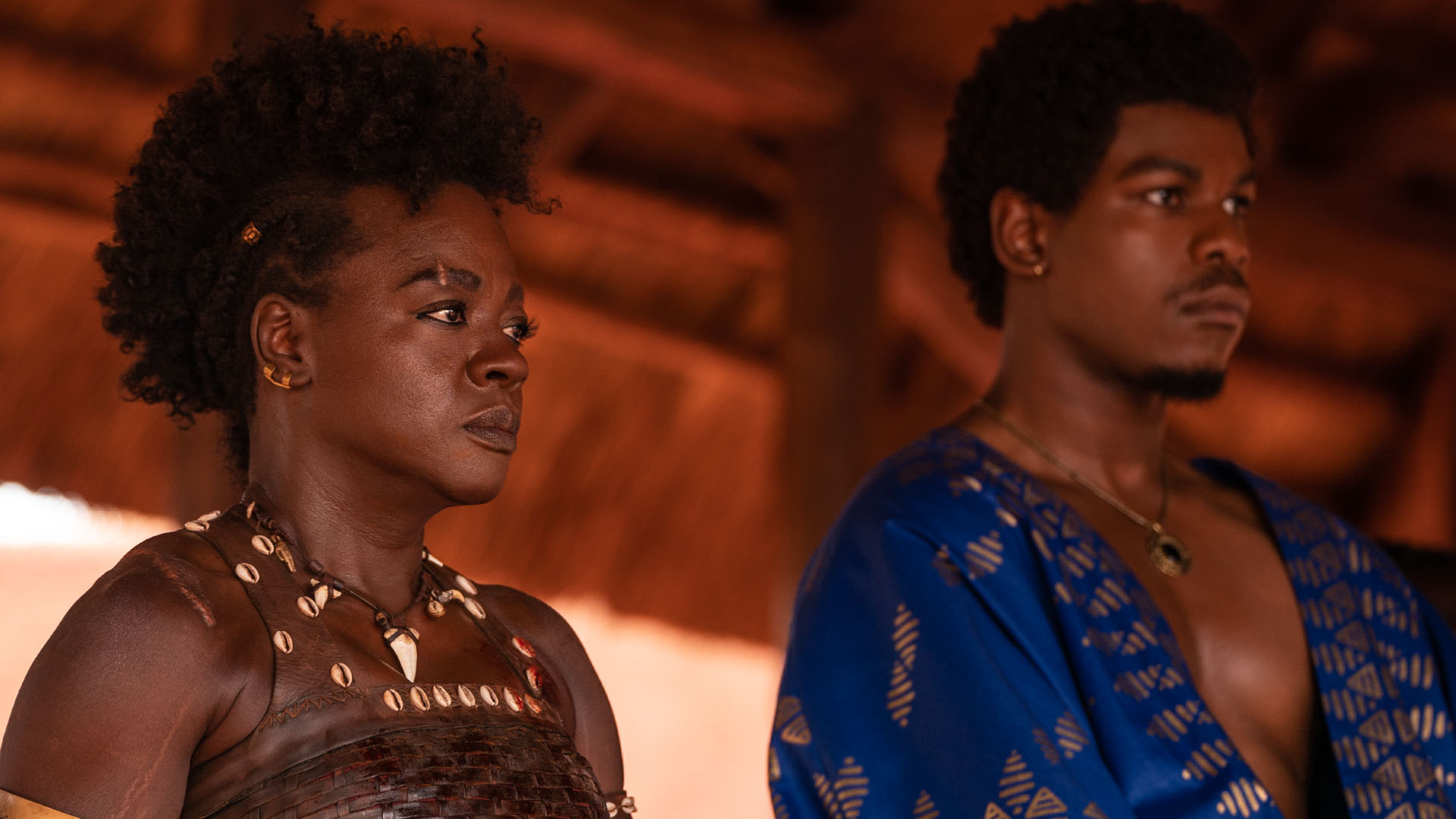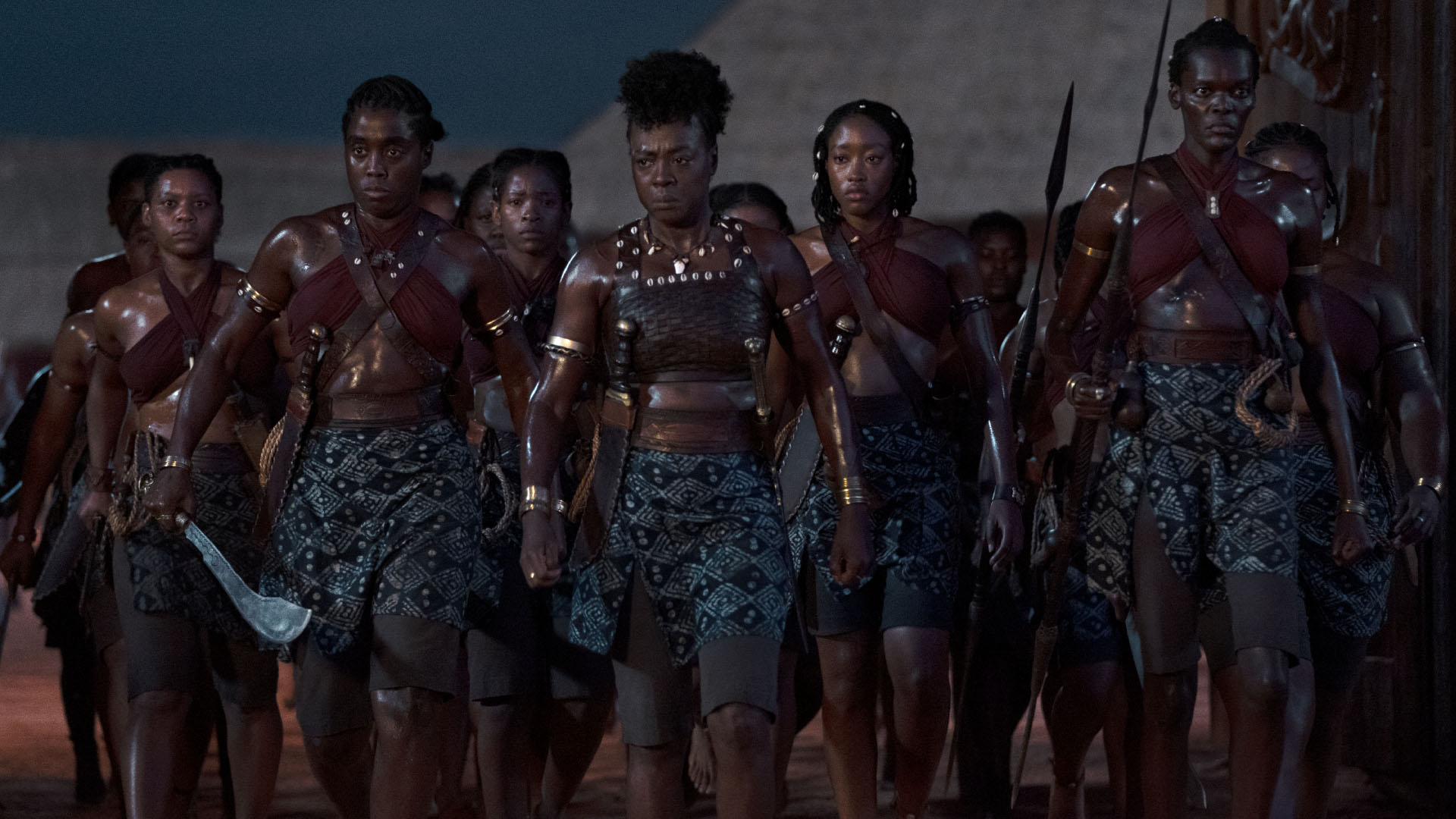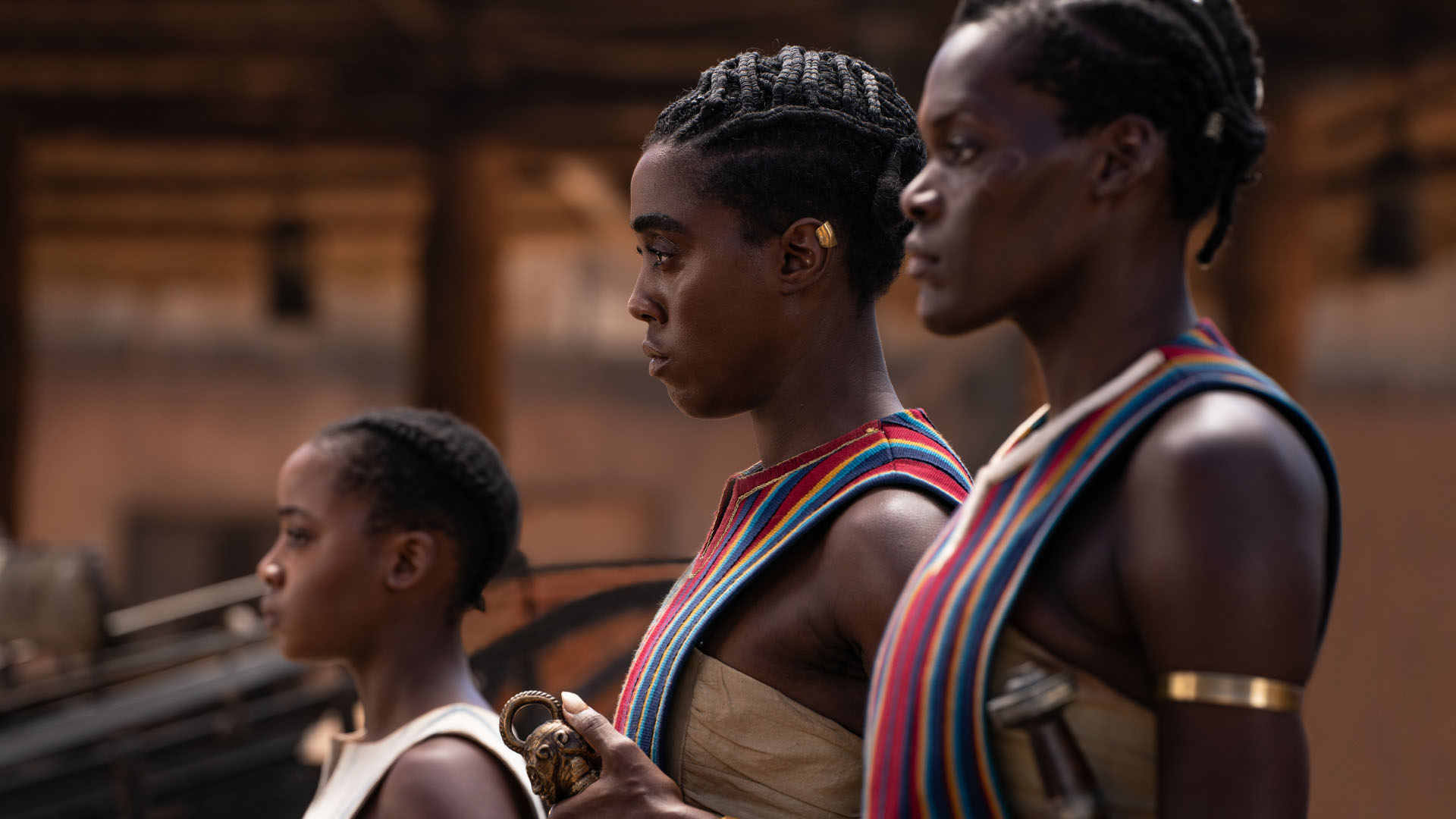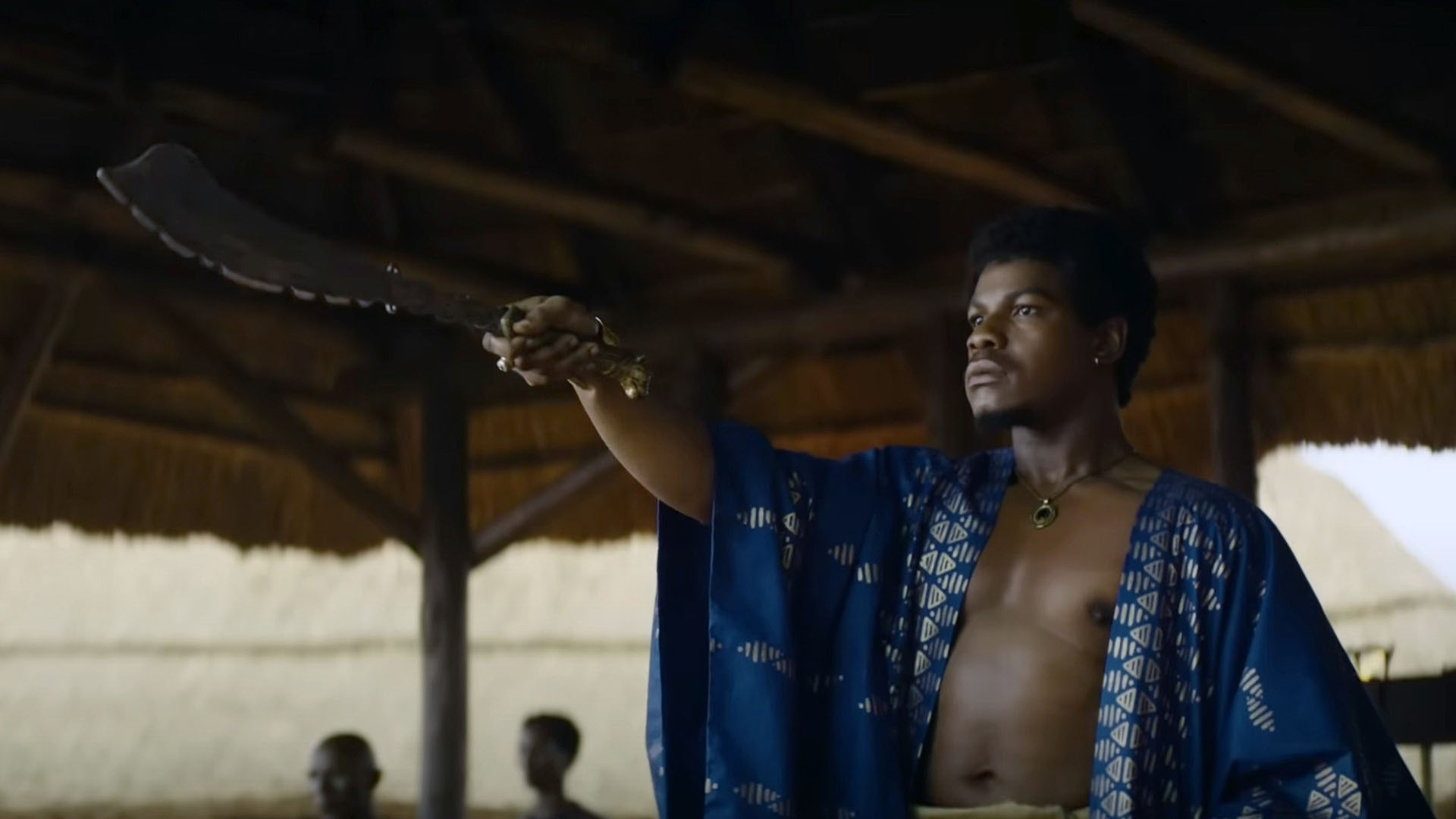The Woman King cast and director explain the importance and healing of their hit historical epic

Historical epic The Woman King opened in the US to strong, positive reactions from critics and audiences alike. Steve Newall heard from the stars of the film – Viola Davis, John Boyega, Thuso Mbedu, Lashana Lynch, Sheila Atim – and its director Gina Prince-Bythewood.
INTERVIEW EDITED FOR LENGTH AND CLARITY
The Woman King
Set in the 1820s, The Woman King is a historical epic about the all-female Agojie warriors of the Kingdom of Dahomey (present-day Benin). A rare mid-budget film with Black talent on both sides of the camera telling a Black story, the film is an even more unlikely success in 2022 in that it’s an original film with a female director—all things that conventional contemporary “wisdom” would say count against the sort of success the film has had to date.
Boasting a current Tomatometer score of 94%, and an even higher audience score of 99% on Rotten Tomatoes, the film has also made back its production budget from its US release alone, and now sees the start of a worldwide release that continues this trend of popularity (Katie Smith-Wong’s review for Flicks has lots of praise, saying The Woman King “celebrates Black women through its power, pride and poise to create one of the best films this year”).
As much as the cast and filmmakers want their film to impact audiences as we’re seeing, it’s clear from our conversations that in making The Woman King, they’ve all had powerful, positive experiences of their own.

“I wanted to see me, make people feel less alone.”
“We set out to make a great film,” says Oscar-winning acting icon Viola Davis. “We set out to emulate all the great artists that I’ve ever admired in my entire career—like Arthur Miller, August Wilson, Eugene O’Neill, you know? The great filmmakers Sydney Pollack and Sidney Lumet. What they all did was create experiences in the theater that made me feel less alone. And I think that’s the beauty of art. The only issue I have with all of them, with the exception of August Wilson, is that I’ve never been in the story. And I set out to do the one thing that made me want to be an actor, I wanted to put myself in the story. When I say put myself in the story, it’s Thuso [Mbedu] I mean, and Sheila [Atim] and Lashana [Lynch] and Adrienne [Warren] and Jayme [Lawson]—all of them, I see as me. I wanted to see me, make people feel less alone.”
“I have had a 33-year career,” Davis continues. “And I have had some beautiful projects. But I’ve had more projects where I don’t know who the hell I was, even on the page. And there was no passion or need to find out who I was to make it culturally specific—which is why it’s important to tell a story that is so specifically African and Black. Because I can show up within those roles and be seen. My femininity can be seen, my voice, what I look like, my skin, my hair. I can show up and be seen without apology, and introduce myself to you—Viola Davis—as a dark-skinned Black woman, without a filter, without reducing myself to fit into your understanding of me. And that is why it’s important to tell this story and for you to sit with me, Nanisca, and Nawi, Amenza, Izogie, Ode, Fumbe, and Shante. To sit with us for two hours and six minutes and come into our lives.”
Seeing a film of this scale led by Black faces is such a rarity, I observe to director Gina Prince-Bythewood. So, was there a particular sense of responsibility that came with bringing such a big project like this to the screen? “Absolutely,” Prince-Bythewood replies. “For years, I wanted to have something like this—Braveheart is absolutely one of my favorite films. And as I would often say, I would love to have our own Braveheart—then this script came, and I suddenly saw the opportunity. But also, as you say, this type of film has not been done yet in Hollywood. I still look at it today and see a miracle, because our stories have not been valued. Certainly, these characters have not been valued.”
According to Prince-Bythewood, to put something like this into the world, to pitch a vision to the studio and then say definitively, “I promise to make a film worthy of these millions that you’re giving me,” a filmmaker has to believe in that “so deeply”.
“Because it’s got to work,” Prince-Bythewood elaborates. “We’ve got to prove that an audience will come and see these women in the same way that I went to go see Braveheart. I don’t look like Mel Gibson, but I loved his story—I love the cultural specificity of it. I love that I was rooting for him, the same way that I felt watching Gladiator or Dances with Wolves. And so here’s an opportunity to tell the story of this culture, to be culturally specific yet, knowing that these are people and characters that everybody can root for.”
“Coming and working on this was healing for me”
Aware that John Boyega has previously shared some of the disappointing experiences of being part of a big franchise—something that the cast all perhaps had their own versions of—I asked if the actors could contrast previous disappointments with their experience working on The Woman King.
“Coming and working on this was healing for me,” Boyega reveals. “I needed this opportunity to just see everybody. It’s not just about the color of the skin, but it’s also about the fact that people are skilled, they have the talent to actually do the jobs that they’re doing.”
For Boyega, those skills were evident on both sides of the camera, telling me “it’s quite a healing experience to be on a set where everybody is empowered to do the role that they trained for.”
“This movie made me realise I was living life apologising for existing”
Healing is a word also used by Thuso Mbedu, outstanding as new Agojie recruit Nawi, to describe their experience. As Mbedu puts it, there are so many parts of Black women that are stifled when they grow up, with so many things written into their story that they never subscribed to. “And so playing characters like this, where it’s safe to be one thousand percent the way that you look, you know, brings out that confidence,” Mbedu says.
“Being assertive, to have a voice, is healing and heals those parts of us that were knocked down from the time that the tone of your complexion fully set into your body. You happen to not be lighter skinned, and for me, I know I’ve said this a number of times, this movie made me realise I was living life apologising for existing. And I was not aware of it until we did this movie. My character forced me to say, ‘No, you are a person, you’re a human being, you’ve got gifts, you’re allowed to feel, you’re allowed to have desires, you’re allowed to have passions, you’re allowed to have goals that you can pursue and do so you know, in full confidence of who you are’. And that was very healing.”
“It’s incredible to have your vulnerability be taken care of”
Lashana Lynch describes making The Woman King as a raw experience: “For a lot of us, whether it be the characters that we played, or the history that we are diving into, or just how hard the shoot was in terms of doing your own stunts, and having night shoots, all of that comes with it,” Lynch offers. “It’s incredible to have your vulnerability be taken care of by the filmmaker, and by the cast and crew.” The production developed a shorthand of communication, Lynch tells me, speculating it might have been because there were so many Black people working on The Woman King. Cast and crew alike could understand what was required of actors to get to a place where they could represent the women they were embodying in the best way, Lynch explains, and all could see how this made the cast delicate and vulnerable.
“It took a lot for us to see each other,” Lynch says. “We saw each other every single day, being tired and training all day and dealing with storylines that are precious to us as a people but also that really deserve our attention. And we had to go there in order to respect that respect to the story—but also to respect each other and see that when one is down, we can use our little bit of power that we have to bring the other up.”

“That was really important and I think a lot of us relied on that in order to remember why we’re here,” Lynch continues. “To remember why we’re doing this both as performers, and also as people who are responsible in our culture to ensure that stories like this aren’t just told right now, but they’re told forevermore and continue to reverberate amongst many cultures around the world. That was really important to me. And it’s taught me a lot going forward in my career, that I want to really maintain this standard in myself as a woman, as a human, and also as a performer. As a creator. I want to make sure that everyone around me, both in front and behind the camera is maintaining that standard and coming with you on the journey to ensure that the industry and multiple sectors around the world are going in the right direction.”
“Something really special and magical comes out of that”
Sheila Atim drew inspiration from seeing the passion and fight required from everyone involved in the film: “I think you can see that in this film, there are many aspects that are unprecedented,” Atim explains. “And so it means everyone’s just kind of mucking in together and, you know, throwing everything they can to make it work—the stakes were really high. When I’m thinking about big budget projects, it’s important for us to keep on pushing and not resting on our laurels and not getting complacent, you know?”
“There is a large part of this industry, that’s about money. And that’s a very real fact and aspect. But I think at the core of it, if you can still keep the passion, you can still keep integrity. Everybody who was involved is really pulling together behind a common cause, and really trying to get the best out of themselves and each other. I think something really special and magical comes out of that. So that’s what I really experienced from a project like this.”
With multiple cast members referring to the production’s training regimen (seen in more detail in the clip above), it’s clear that this was a physically demanding film, and it’s one that brought contrasting styles of action to the screen. There’s a grace to the martial arts that the Agojie train in, and then chaos on the battlefield. I asked Gina Prince-Bythewood how they married those two disparate elements when designing action sequences.
“I could do longer takes—I wanted to showcase their skill”
Highlighting the skill of fight and stunt coordinator Danny Hernandez, when they talk about the fights and start designing them the process always starts with character and starts with story, Prince-Bythewood tells me. “He was tasked with creating a fighting style for these women that was truthful, that made us and the audience believe and understand how these women beat men. Because they legit did. What does that look like? What does that feel like?”
That’s something that differs from character to character, as their fighting styles reflect individual personalities and skill sets. And, even amid the chaos of a battle, fight scenes needed to have a story, a beginning, middle and end that could be conveyed by the cast, as opposed to stunt people. “We also knew that in not using [stunt] doubles, I was able to get the performance from the actors,” Prince-Bythewood says. “But also I could do longer takes—I wanted to showcase their skill. I wanted to showcase what was happening in the moment and the performance. And so designing sequences that I could stay on that didn’t have to need quick cutting because I wasn’t cutting around anything or trying to hide anything.”

Watching his castmates go through the rigorous training regimen to develop those skills, pushing through the pain, was something special for Boyega: “Look at this, these are the people that they [the industry] said don’t deserve the opportunity, don’t deserve to be number one on the call sheet, and look at them killing it in ways that I don’t see every actor kill it. And so for me, it was inspirational to just be around that and to know that it’s possible. And it’s not just, you know, a little clause or propaganda, it’s actually about giving the right people from our community, with the right skills also, the best opportunity—and this film is a great example of that.”



















